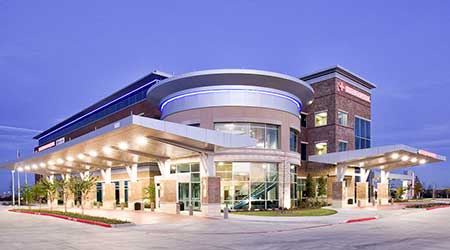 Microhospitals have a smaller footprint that makes them more efficient and convenient for patients, physicians, and nurses, with spaces designed to be flexible and adaptable.E4H Environments for Health Architecture
Microhospitals have a smaller footprint that makes them more efficient and convenient for patients, physicians, and nurses, with spaces designed to be flexible and adaptable.E4H Environments for Health ArchitectureMicrohospitals, Telehealth Poised To Grow Rapidly
As technology improves, and patients become more comfortable with these trends, both microhospitals and telehealth will continue to become more widespread.
Microhospitals and telehealth are poised to continue growing rapidly in 2018 and 2019, and they are trends that are tremendously symbiotic. Microhospitals can often benefits from robust telehealth systems and practices to achieve their potential, particularly in rural settings, and many of telehealth’s best opportunities for continued growth and market penetration will be as more microhospitals provide or replace services now being offered at larger, centralized hospitals.
Already, best practices and principles are emerging for telehealth. This is not a technology-only decision. Clinical and administrative leaders must be engaged early and stay closely involved throughout design and deployment with IT professionals on designing and operating the systems. This includes deciding what must run in the cloud and what can be managed with local autonomy and what information security risk assessments and protections must be developed.
Based on how rapidly every other kind of technology has evolved in the last decade, it is likely the most successful telehealth systems will be those that establish interoperability principles and standards to lower integration costs today and for the future, and that implement a philosophy of “future proofing” through built-in adaptability of common services and scalability of infrastructure capacity.
Bottom line, delivering care in a rural setting is complex and requires a different strategy than in an urban setting. Microhospitals, with support from telehealth where appropriate, are positioned to provide the most efficient, effective care. Healthcare providers serving communities with a variety of needs do well to remember: You cannot be everything to everyone. Designing on the smaller microhospital scale allows for flexibility, incorporating technology expands the reach of specialist – and together, by providing expanded access to healthcare in rural settings, both improve population health.
Rod Booze (rbooze@e4harchitecture.com) is a partner at E4H Environments for Health Architecture, an architecture firm focused on the healthcare and health innovation industry. The firm has led the planning and design of 28 microhospitals across the country. Booze is a design leader in the newly-emerging field of microhospital facility construction.
Related Topics:












